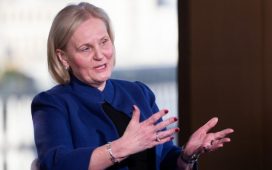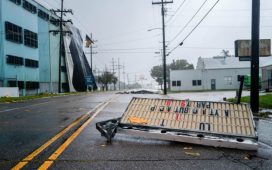In 2022, Stephen Sangster had an uneventful year behind the wheel of his brand-new Dacia Jogger, covering 6,000 miles with no accidents or traffic offences. So the father of four was shocked when his car insurance renewal quote landed and the price had soared by a “shocking” near-90%.
“My quote has come through 87% higher, and that’s with no accidents, points or anything else that would increase my risk,” Sangster says. “With inflation where it is, you would swallow 10%-15% … but it’s such a jump.”
Although this week’s cost of living bulletin from the Office for National Statistics showed inflation slowed to 7.9% in June, as the price of petrol and diesel dropped by more than a fifth, the devil was in the detail. The data also revealed that the price of car insurance – which for most Britons is their biggest household bill after council tax and energy – shot up 50.9% in the last 12 months.
When the Dacia Jogger launched last year, it was lauded as the cheapest seven-seater on the market, so it appealed to households on tighter budgets. Now members of a Facebook group dedicated to the car that Sangster belongs to are sharing horror stories as insurance quotes arrive for the coming year.
“It’s quite a basic, affordable family car, so it attracts the cost-conscious,” he says. “When I opened the discussion about insurance costs, it seemed the cost of renewing in March or April was not so bad but since then it has gone through the roof.”

Sangster’s renewal offer from Admiral came in at £614, up from £328 in 2022, and even after going online, the cheapest deal he could find was from Churchill, and it still cost 40% more for a less generous policy.
In recent weeks, Direct Line and Saga customers have also contacted Guardian Money after being alarmed by their renewal quotes for 2023. One driver reported Saga had increased the cost of insuring her four-year-old Audi TT by 77% to £2,044, even though her driving record was unchanged; however, she was able to find a cheaper deal elsewhere.
The average car insurance quote increased by 34% in the year to May, according to the market research firm Consumer Intelligence. It says a typical policy now costs £2,145 for under-25s, £850 for the 25-to-49 age group, and £568 for over-50s. In bad news for new drivers, there are also fewer of the telematics policies (where a black box or smartphone app measures how you drive) that are usually a cheaper option.
While consumers, struggling with higher food and energy costs, fear they are being milked to boost insurers’ profits, experts counter that they aren’t making any. They say car insurance has slim profit margins, and that many firms were caught out during 2022 by the steep rise in claims costs and are making up ground with higher premiums.
The timing of new car registrations means September is a big month for renewals, and Ian Hughes, the chief executive of Consumer Intelligence, says that when Britons come back from their summer holiday, “they will be in for a big shock”.

He adds: “Last year, lots of people didn’t see any increase in their car insurance. This year will be a double whammy because insurers underpriced last year and have to play catchup; then they also need to think about where we will be six to 12 months from now, and price for that.
“Car insurance is a tough market. There’s a misconception about fat cat insurers making loads of money but that is not the case. Most of them lost money last year, and some people lost their jobs as a result.”
Although prices are up, anyone shopping around will find that the number of policies has proliferated as companies use different logos or brand them like supermarket food ranges. Hastings, for example, sells Hastings Essential, Hastings Direct and Hastings Premier policies.
The cheapest ones are the most basic, and features often considered standard may be removed, making it important to read the small print. They also typically have a higher compulsory excess, which is the amount you pay yourself if you make a claim.
James Daley, the managing director of the research foundation Fairer Finance, says the financial watchdog’s decision to put an end to companies charging a loyalty penalty has also contributed to price rises.
In 2021 the Financial Conduct Authority banned “price walking” – the practice that resulted in loyal customers, who automatically renewed their policy every year, being charged higher premiums than new customers.
“All the people who shop around for their car insurance are going to have to pay more because that’s the nature of banning differential pricing,” Daley says. “Obviously, for some people, it has brought prices down but they were probably ignorant to the fact they were paying too much in the first place.
“If it hadn’t been for the end of dual pricing, we wouldn’t be seeing premiums go up by quite so much, but they would still have gone up.”
Daley criticises the “hollowing out of products” so that insurers can offer – at least superficially – more competitive prices and get to the top of price comparison tables.
“There might be multiple brands from a name you know and trust but products that actually are quite different,” he says. “Some of the essentials policies don’t cover windscreen damage, for example, which is something that’s just been part of all car insurance policies for ever. It’s very confusing.”
After studying the price comparison sites, Sangster, who lives in Orpington in south-east London, found a cheaper deal with Churchill, albeit one that still cost more than 40% more. It also involved compromises, such as a bigger excess and no cover for driving in Europe.
Armed with this information, he went back to Admiral, which offered an improved quote of £482 – a 47% increase on 2022’s premium – for a policy akin to his existing one, albeit with the excess upped from £250 to £375.
“When it was £300 a year for car insurance, you could pay it as a one-off sum but when it’s double that, you start to think it might be more affordable to pay monthly, but then you pay interest as well. I don’t think many people can swallow a cost like this in one go.”
The Association of British Insurers says motor insurers paid out £2.4bn in motor claims in the first three months of this year – up 14% on the same period last year. This was the highest quarterly payout since it started collecting data 10 years ago.
The trade body highlighted that the cost of vehicle repairs was up by a third, at £1.5bn, on the same period last year because of rising costs, including energy inflation, and more expensive repairs.

The cost of providing replacement cars was also up 29% because of longer repair times, it said. Payouts for vehicle theft, at £152m, were also up by the same amount because of the higher prices now commanded by secondhand cars. In addition, firms paid out £642m in personal injury claims.
Laura Hughes, the ABI’s manager of general insurance, says motor insurers “continue to deliver when motorists and personal injury claimants need them the most”.
She adds: “Like most other business sectors, motor insurers face sustained cost pressures which they are finding increasingly challenging to absorb. Despite this, they are doing all they can to ensure competitively priced motor insurance, as well as offering the best possible claims service.”











